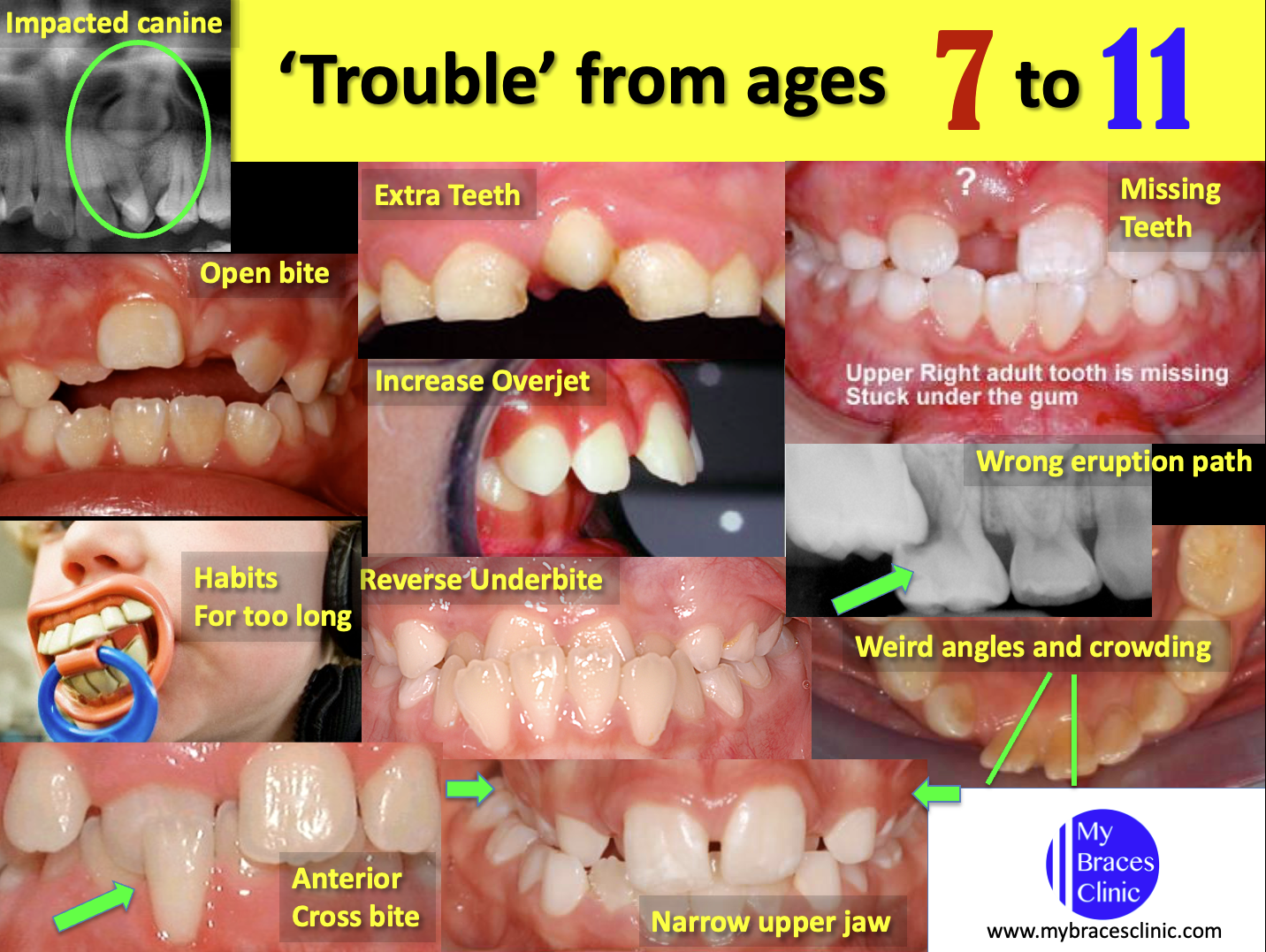Interceptive Orthodontic treatment for Kids
Q: Why bother with Interceptive Orthodontic treatment when the kid will surely need braces later?
Baby teeth aren’t just cute to look at; they also act to reserve the space for future adult teeth to emerge. The current position of your child’s baby teeth and when it starts (or fails) to come loose, can tell us a lot about your child’s facial and dental future.
Interceptive Early Braces for kids are targeted braces treatment to correct developmental problems that affect the development of the face and eruption of adult teeth.
When we identify dental and facial growth problems early, we can use Interceptive Early Braces to TARGET and NIP problems in the bud before problems snowball into the teenage years and become more difficult; more uncomfortable, and take longer to treat.
Q: When is the best time for Interceptive Orthodontic treatment?
The American Association of Orthodontists recommends children from age 7 to visit an Orthodontist for dental and facial assessment.
That’s because facial growth and smile development are BOTH important. At age 7, that’s when problems start to show. It’s the right time to start evaluation and make sure things are moving the right way. (pun intended!)
Best age to start interceptive Orthodontic treatment is between7-10 years old. Between 7-10 years old, baby teeth are firm andtooth movement is the most efficient. Interceptive treatmentshould aim to complete in18 months or less.
Q: What type of braces materials are there for Interceptive Orthodontic treatment?
Braces materials for Interceptive Early Braces range from sectional fixed braces, removable braces, Myofunctional Therapy, and Invisalign for kids. Which one to use will be determined by proper diagnosis, treatment planning, and balancing the practical needs of the family.

Here’s a pictorial summary to describe some of the common orthodontic problems that must be treated at age 7.
Indications for Interceptive Kid’s Braces:
Space Maintainers:
When a baby tooth is lost too early, the surrounding teeth start to drift into that space. In order to prevent the underlying adult tooth from getting stuck/ impacted, space maintainers are digitally designed and fabricated to maintain the space until the adult tooth is ready to erupt.
Space Regainers:
We need to regain space for erupting adult teeth when neighboring teeth drift into the space of baby teeth that was lost too early.
There are various space regainer designs for different problems and circumstances. As each patient is unique, we will customize and design a treatment plan after a detailed assessment and diagnosis.
Facilitate Adult teeth to erupt:
Adult teeth that are stuck need to be treated or they may never erupt into the mouth! This results in an abnormal arrangement of teeth, spaces, or damage. Treatment involves (1) redirecting the path of stuck adult teeth and (2) timing the removal of surrounding baby teeth to clear the way.
Closing spaces:
Abnormally large spaces between teeth may indicate the presence of an extra tooth or maybe teeth are too small or localized cyst.
It is important to remove any pathology causing the space, then the abnormal space should be closed to allow adult teeth a smooth path of eruption. We do this by various means such as interceptive early braces and Invisalign.
Correcting malpositioned teeth:
When adult teeth grow into scissors or crossbite, this causes bite interference. As a result, the jaw may deviate and appear crooked or long jaw. Interceptive braces aim to correct this undesirable, unintended jaw shift and prevent unnatural damage to malpositioned teeth. When adult teeth develop and erupt into a bad position, it may cause damage and harm to the adult teeth next to them. Therefore, it is urgent to correct this problem to prevent irreversible harm or damage and save teeth at risk!
